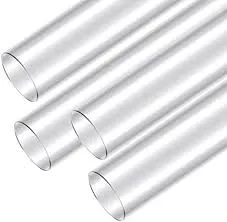Oct . 03, 2024 17:19 Back to list
ppr tube
Understanding PPR Tube A Revolutionary Solution for Plumbing
PPR (Polypropylene Random Copolymer) tubes have rapidly gained popularity in plumbing and piping systems over the past few decades, offering a multitude of benefits that traditional materials often cannot match. This article delves into what PPR tubes are, their advantages, applications, and installation methods, providing a comprehensive overview for those considering this innovative option for their piping needs.
What is PPR Tube?
PPR tubes are made from a thermoplastic polymer known as polypropylene, which is renowned for its versatility and durability. The random copolymer designation indicates the specific molecular structure of the polypropylene, contributing to its enhanced physical properties. PPR tubes typically come in green or white hues and are available in various diameters to cater to diverse plumbing requirements.
Advantages of PPR Tubes
One of the primary advantages of PPR tubes is their resistance to corrosion. Unlike metal pipes that can rust and degrade over time, PPR tubes do not react with water or other fluids, ensuring long-term service without the risk of leaks. Furthermore, they have a low thermal conductivity, making them ideal for hot water supply systems. This characteristic helps maintain the temperature of the fluids being transported while minimizing energy loss, contributing to overall efficiency.
Additionally, PPR tubes are lightweight and easy to handle, which simplifies transportation and installation. Their flexibility allows for easy manipulation, reducing the need for additional fittings and joints. This characteristic not only speeds up the installation process but also minimizes points of potential failure, further enhancing the system's reliability.
ppr tube

Another significant benefit of PPR tubes is their resistance to high temperatures and pressures, making them suitable for both cold and hot water applications. They can withstand temperatures up to 95°C (203°F) and pressures of up to 25 bar (approximately 362 psi), making them a versatile choice for various plumbing systems.
Applications of PPR Tubes
PPR tubes are widely used in residential, commercial, and industrial plumbing systems. They are commonly employed for hot and cold water supply lines, heating systems, and even in industrial applications for transporting chemicals and drinking water. Their versatility extends to underfloor heating systems and irrigation, showcasing their adaptability to different environments and requirements.
Installation of PPR Tubes
The installation of PPR tubes is straightforward, primarily through a process known as fusion welding. This method involves heating the ends of the pipes and the fittings, allowing them to bond together seamlessly. The result is a leak-proof joint that enhances the overall integrity of the plumbing system. Additionally, the lack of toxic substances in PPR materials makes them safe for potable water applications.
In conclusion, PPR tubes present a modern solution for plumbing needs, combining durability, versatility, and efficiency. As more homeowners and industries recognize the benefits of utilizing PPR piping, it is likely that this innovative material will continue to grow in popularity, driving the evolution of plumbing systems toward safer and more reliable options. Whether for residential renovations or large-scale industrial projects, PPR tubes offer a compelling choice that addresses the challenges of traditional piping materials.
-
High-Quality PPR Pipes and Fittings Durable ERA PPR & PVC PPR Solutions
NewsJul.08,2025
-
Black HDPE Cutting Board - Durable, Non-Porous & Food Safe HDPE Plastic Cutting Board
NewsJul.08,2025
-
High-Quality CPVC Panel Durable HDPE & PVC Panels Supplier
NewsJul.08,2025
-
Double PE Welding Rod Supplier - High Strength, Durable & Versatile Welding Solutions
NewsJul.07,2025
-
High-Quality PVC-O Pipe Supplier Durable 75mm PVC Pipe & Connections Leading PVC Pipe Company
NewsJul.07,2025
-
HDPE Drainage Pipe Supplier – Durable & Corrosion-Resistant Solutions
NewsJul.06,2025

